The diagram given below represents an organ system in the human body. Study the same and answer the questions that follow:
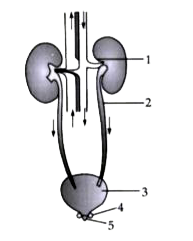
Label the parts marked 2 and 4. Mention the function of part 5.
2- Ureter, 4- Sphincter Muscle, The structure labelled as 5 is urethra. Urethra empties the urinary bladder at regular intervals i.e., carries the urine from the bladder to outside of the body.
Topper's Solved these Questions
- BOOK - ICSECHAPTER - BIOLOGY-2019EXERCISE - SECTION-I (CHOOSE THE CORRECT ANSWER)5videos
BIOLOGY-2019
- BOOK - ICSECHAPTER - ABSORPTION BY ROOTSEXERCISE - ASSERTION & REASON7videos
ABSORPTION BY ROOTS
- BOOK - ICSECHAPTER - CELL CYCLE, CELL DIVISION AND STRUCTURE OF CHROMOSOME EXERCISE - REVIEW QUESTIONS143videos
CELL CYCLE, CELL DIVISION AND STRUCTURE OF CHROMOSOME
Similar Questions
The diagram given below represents an organ system in the human body. Study the same and answer the questions that follow:
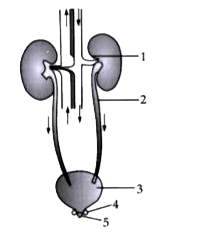
Identify the system.View SolutionStudy the diagram and answer the questions that follow :
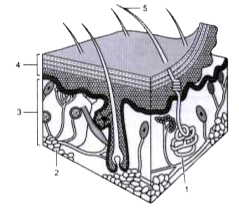
Label the parts 1-5View SolutionStudy the diagram and answer the questions that follow:
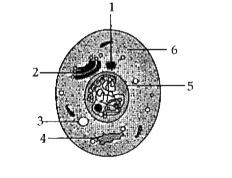
Label the parts 1 - 4.View SolutionStudy the diagram and answer the questions that follow :
Label the parts 1 - 4View SolutionStudy the diagram and answer the questions that follow :

Label the parts 1 - 4.View SolutionStudy the diagram and answer the questions that follow :
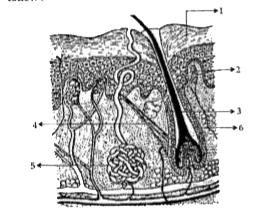
Label the parts 1 - 4.View SolutionStudy the diagram and answer the questions that follow :
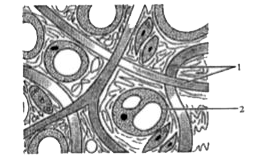
Label the parts numbered as 1 and 2.View SolutionThe diagram given below represents an organ system in the human body. Study the same and answer the questions that follow:
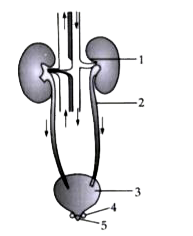
Name the structural and functional units of the part marked 1.View SolutionThe diagram given belwo represents a system in the human body. Study the diagram and answer the following question:
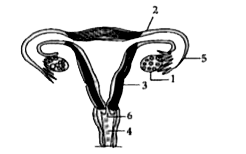
Label the parts marked 5 and 6.View SolutionThe diagram given below represents an organ system in the human body. Study the same and answer the questions that follow:
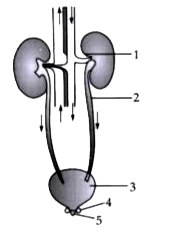
Draw a neat, labelled diagram showing the longitudinal section of part 1.View Solution

